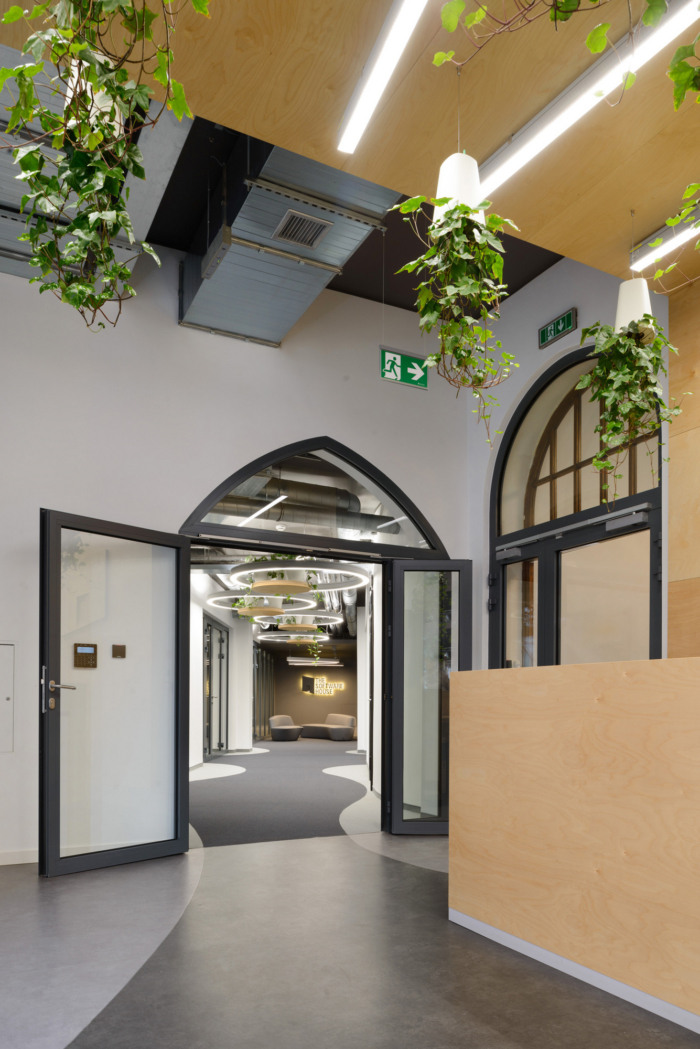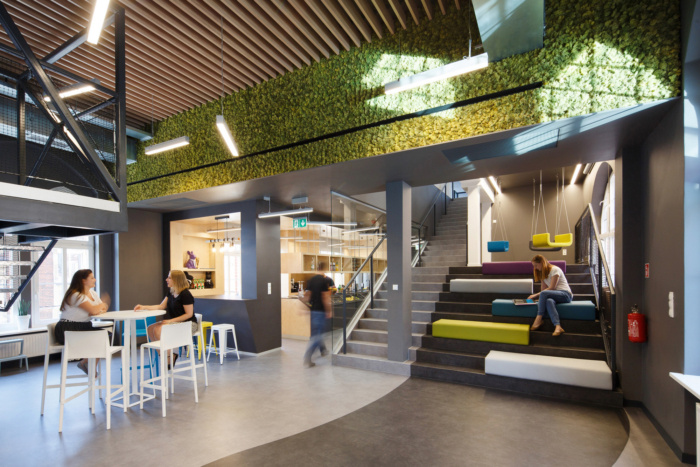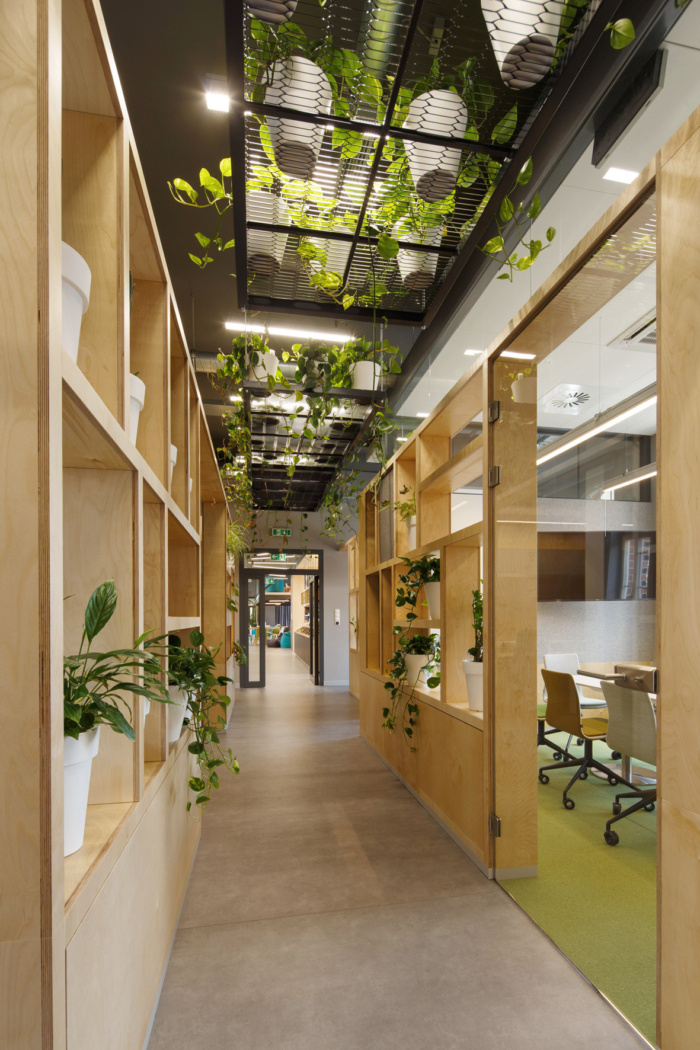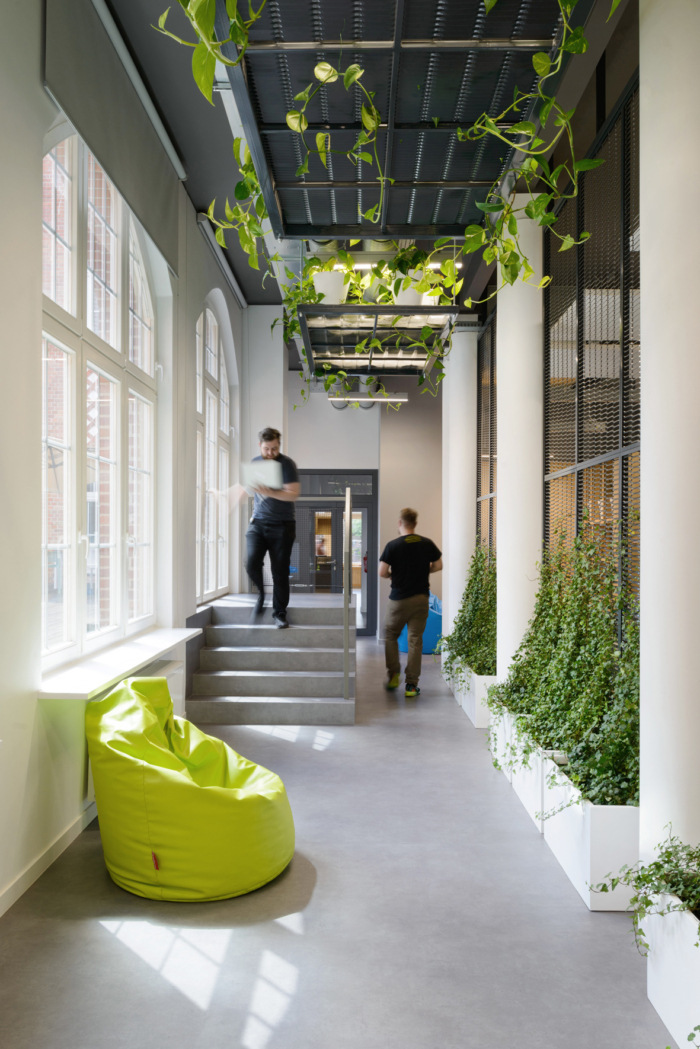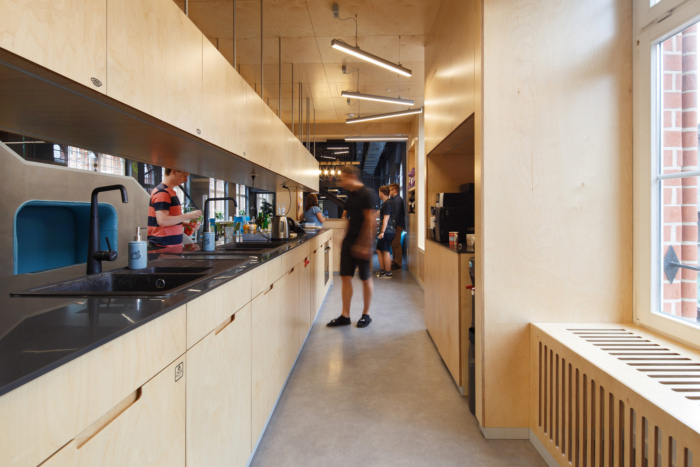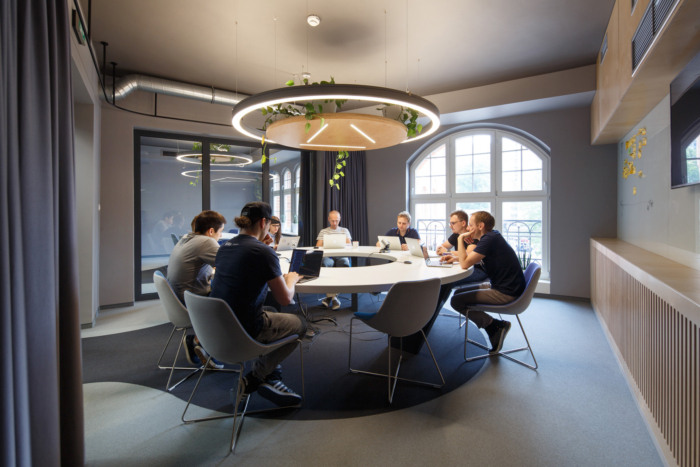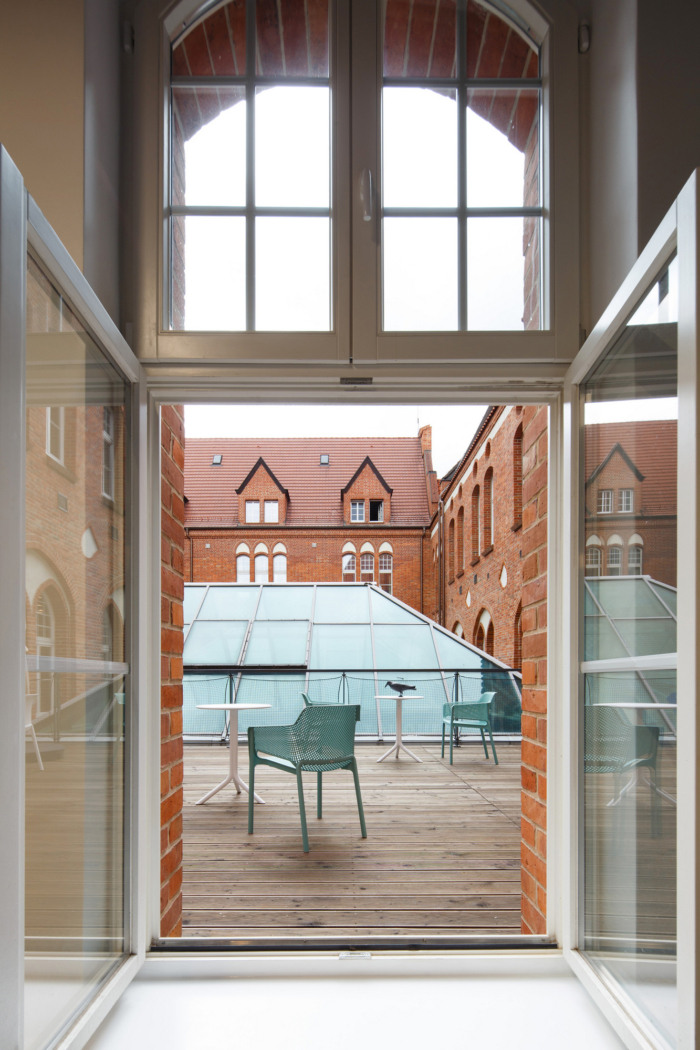
The Software House Offices – Gliwice
Zalewski Architecture Group was engaged by fast-growing European company, the Software House, to create their offices located in Gliwice, Poland.
1500 m2 of social and creative life, of modern history and green technology at the building of Old Post Office in Gliwice. That’s in brief what Zalewski Architecture Group’s project for The Software House is about.
The Software House is one of the 50 fastest growing companies in Central Europe. A global brand that is aware of global trends -its customers come from different continents. On the other hand, a local company associated with Gliwice, who wants to be part of the city’s history. A brand it is something that the company thinks about itself and what it expresses and communicates outside. It’s good when the office is consistent with the company’s brand. The values important to The Software House are dynamics, creativity, individuality, honesty, respect for the employee, reliable business.
Architecture of office interiors is the “language” that the brand speaks of. We can say that the office is a showcase of the company -the first impression experienced by the client and the employee, who is also to some extent, its client. No less important is the second impression –so how office space is conducive to work, to good atmosphere, and how it expresses the philosophy and values of the company. This conversation is carried out through architecture of office interiors.
Modern history – The project of the new headquarters created by Zalewski Architecture Group translates these values into the language of architecture. The choice of location in the historical neo-Gothic building of the former Main Post Office is therefore iconic. It is a symbolic joint of the new and the old -a revitalization that breathes freshness and dynamics into the old walls of the post. The project is also following this trend -it wants to creatively adapt and transform the history, expressing at the same time the values of the client as well as the designers’ own view on the social processes that architecture is responsible for.
Combining the old and the new takes place on many levels. The interior fosters a pro-social atmosphere and the dynamics of creative work. We can find there a large common space with mezzanines and a kitchen -something on the border between a cafe and a playroom, or a chilllout-room. A place where you can work nicely and spend your free time productively. From this space you can enter a 500-meter private terrace located in the patio of the old post office building, bringing to mind a beach ambience and the nostalgia of old monasteries and cathedrals. It gives a unique atmosphere –modernity is mixed with authenticity. Balance that favors work. The value that cannot be overestimated.
Green technology – Office rooms extend around the patio. This is a modern response to open space. The space is quasi-open but divided by ecological plywood walls into smaller annexes that provide focus and peace of mind at work. Ecological design is an important factor here. According to the research, materials such as wood and wool act asa stress-reducing buffer and have a positive impact on the well-being of employees.
Not only furniture is ecological. Leitmotiv of the project is living greenery which occurs at every step. There are plants everywhere -integrated into shelves, climbing on walls, hanging on special platforms above the heads. That was intentional design so as to improve not only the aesthetics but also the indoor climate. Plants are treated here equally with ventilation and air conditioning -they improve humidity, regulate temperature and produce oxygen. Oxygen for the brain, design for creativity.
Social and creative life – Architecture should respond to the needs of the times in which it arises. Modernity creates new technologies, new professions, new habits -a new lifestyle. Today functionality means more than only ergonomics. It also refers to emotions -the way in which architecture provides mental satisfaction. Thanks to the rapid development of technology we can work from various places. The boundaries between work and private life are blurring. Work and home are intermingled. That’s why nowadays the office is both “home office” and “office as home”. There must be not only adequate spaces in it but also they need to be well-designed. They are to ensure a balance between work and life, since we no longer distinguish to the end whether we work socially, whether we rest creatively, or maybe relax effectively.
Zalewski Architecture Group’s project follows this trail -its task is to build engagement and efficiency of employees, but also be responsible for their emotional balance, a sense of belonging to the world, the community and the city.
Designer: Zalewski Architecture Group
Photography: Tomasz Zakrzewski

